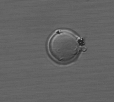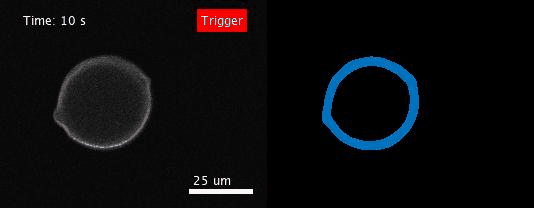MSci Project dt2315
DNA aggregates as scaffolds for artificial cells
An artificial cell was created by encapsulating a porous aggregate of amphiphilic DNA nanostructures, as a cytoskeleton, inside a lipid membrane. The membrane was found to be permeable to macromolecular probes, yet shows continuity in fluorescence recovery after photobleaching. A response to stimuli, in the form of cell disassembly, was achieved by both strand displacement and DNase I-mediated cleavage to demonstrate potential for programmable cargo release.
FRAP experiments
Image analysis for a fluorescence recovery after photobleaching (FRAP) experiment. The region of the membrane was identified and used to track the fluorescence recovery in the bleached region. An enlarged mask was used over the membrane area to account for the construct drifting.
Strand displacement triggered disassembly
Image analysis for the triggered disassembly triggered via toehold mediated strand displacement. The region of the membrane was identified and tracked to monitor the change in size as the DNA core disassembled.
DNase I triggered disassembly
Confocal images of an artificial cell with a DNA-based cytoskeleton (cyan) and fluorescent lipid membrane (red). The disassembly of the DNA core is triggered by the addition of the enzyme DNase I. Initially, the lipid coating sustains its shape while the DNA core is shrinking. After a while however, the synthetic lipid membrane starts disintegrating too.
 |

|


